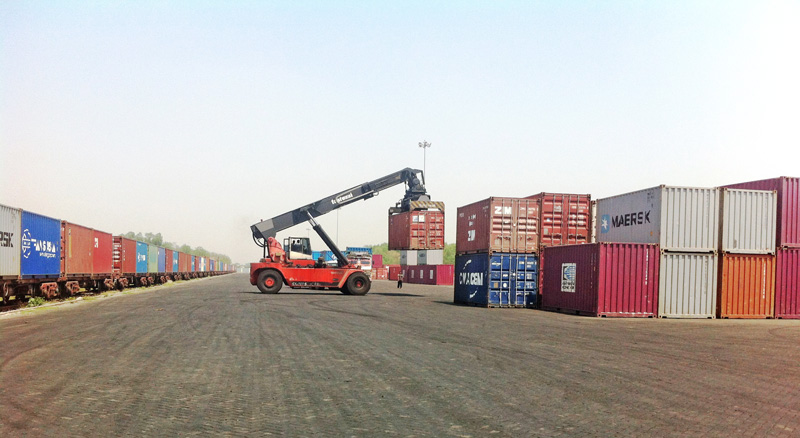Containers pile up at Birgunj dry port

By Dipak Prasad Gautam
Birgunj, May 9: More than 4,000 containers coming from the third countries via India have piled up at the dry port in Birgunj, as their transportation destination has become distant due to prolonged lockdown.
There are currently 4,011 containers at the port, nearly three times more than its maximum capacity of 1,542. And a further 1,350 containers are on their way, set to arrive soon, as informed by Animesh Kumar, managing member of Himalaya Terminal Pvt Ltd (HTPL).
HTPL is the company that operates the dry port.
Kumar told The Rising Nepal that around 180 containers were arriving at the port every day but not as many were leaving, causing the pile up. He informed that there were 3,631 filled containers and 200 empty ones held up at the port’s customs office with 180 additional containers in the process of being unloaded from the trains.
Kumar said, “Trains carrying two rakes or 180 containers arrive at the port on a daily basis, or sometimes once every two to three days. But due to the lockdown, we have not been able to send them anywhere except Bara and Parsa.” He added, “This means that the number of containers at the port is increasing day by day, well beyond its capacity.”
Before the lockdown, the port used to ship out 250 to 300 containers to their destinations daily. But now, that number has dropped to 120 or at maximum, 150. But the number of containers being shipped in has not decreased at all. This is what has caused the backlog.
According to the port authorities, lorry drivers refuse to transport the containers to any places farther than Jitpur Simara during the lockdown. They cite reasons like the closure of hotels and food stalls, shuttered mechanical and motor repair shops and lack of parts and technicians for the vehicle if it stops working in the middle of the road as reasons for refusing to haul long-distance loads.
Similarly, the lockdown has also prevented workers who live far from the port from coming to work every day. This has created problems in unloading the cargo from the trains and a shortage of manpower for the overall management of the facility.
Recent News

Do not make expressions casting dout on election: EC
14 Apr, 2022
CM Bhatta says may New Year 2079 BS inspire positive thinking
14 Apr, 2022
Three new cases, 44 recoveries in 24 hours
14 Apr, 2022
689 climbers of 84 teams so far acquire permits for climbing various peaks this spring season
14 Apr, 2022
How the rising cost of living crisis is impacting Nepal
14 Apr, 2022
US military confirms an interstellar meteor collided with Earth
14 Apr, 2022
Valneva Covid vaccine approved for use in UK
14 Apr, 2022
Chair Prachanda highlights need of unity among Maoist, Communist forces
14 Apr, 2022
Ranbir Kapoor and Alia Bhatt: Bollywood toasts star couple on wedding
14 Apr, 2022
President Bhandari confers decorations (Photo Feature)
14 Apr, 2022











